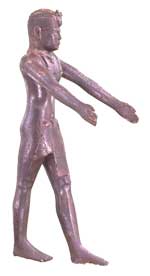Kushite Kingdom
Kushite kings ruled Egypt
The Kushite king Kashta arrived in Egypt amid political disarray to claim the office of pharaoh, apparently at Thebes and apparently peacefully. He was the first of the Nubian line of kings who ruled as Egypt’s 25th dynasty (747–656 BC). Piye, the following king, carried the conquest of Egypt to the Nile delta, responding dramatically to a threat from a combination of powerful dynasts to the north. He created an empire that stretched from the 6th cataract to the Mediterranean Sea.
Kushite pharaohs revived Egyptian traditions

The Kushite rulers presented themselves as pharaohs who could return Egypt to its former glory. Looking back at Egypt’s earlier great ages for models to develop. Kushite pharaohs built and restored many monuments in Egypt and Nubia. Representations, especially of the pharaohs, show a new synthesis of Nubian and Egyptian forms with the introduction of elements such as Nubian facial features and Kushite royal regalia, including the cap surmounted with two sacred serpents that replaced the Egyptian White Crown surmounted with a single serpent. Kushite rule of Egypt ended in 656 BC when the Nubians withdrew to their homeland in the face of overwhelming Assyrian invasions. Kushite kings who continued to rule Nubia were buried at Napata until 270 BC when the main royal burial place of the Kushite state moved farther south to Meroe.
The Kushite kings who ruled as Egypt’s 25th Dynasty styled themselves as pharaohs. This royal figure is typical of representations of these kings. Wearing an Egyptian kilt and belt, the king also wears distinctly Nubian regalia including a necklace with ram’s head pendants. Ram-headed amulets symbolizing the god Amun were worn by Kushite kings from at least the 25th Dynasty through the later Meroitic period of the Nubian state. The cap crown with two uraei (sacred serpents) was also Kushite, contrasting with the single uraeus worn by Egyptian kings.
The outstretched arms indicate that this bronze figure originally held a ritual object or emblem. The figure’s features most closely resemble known examples of the Kushite king Taharqo.

